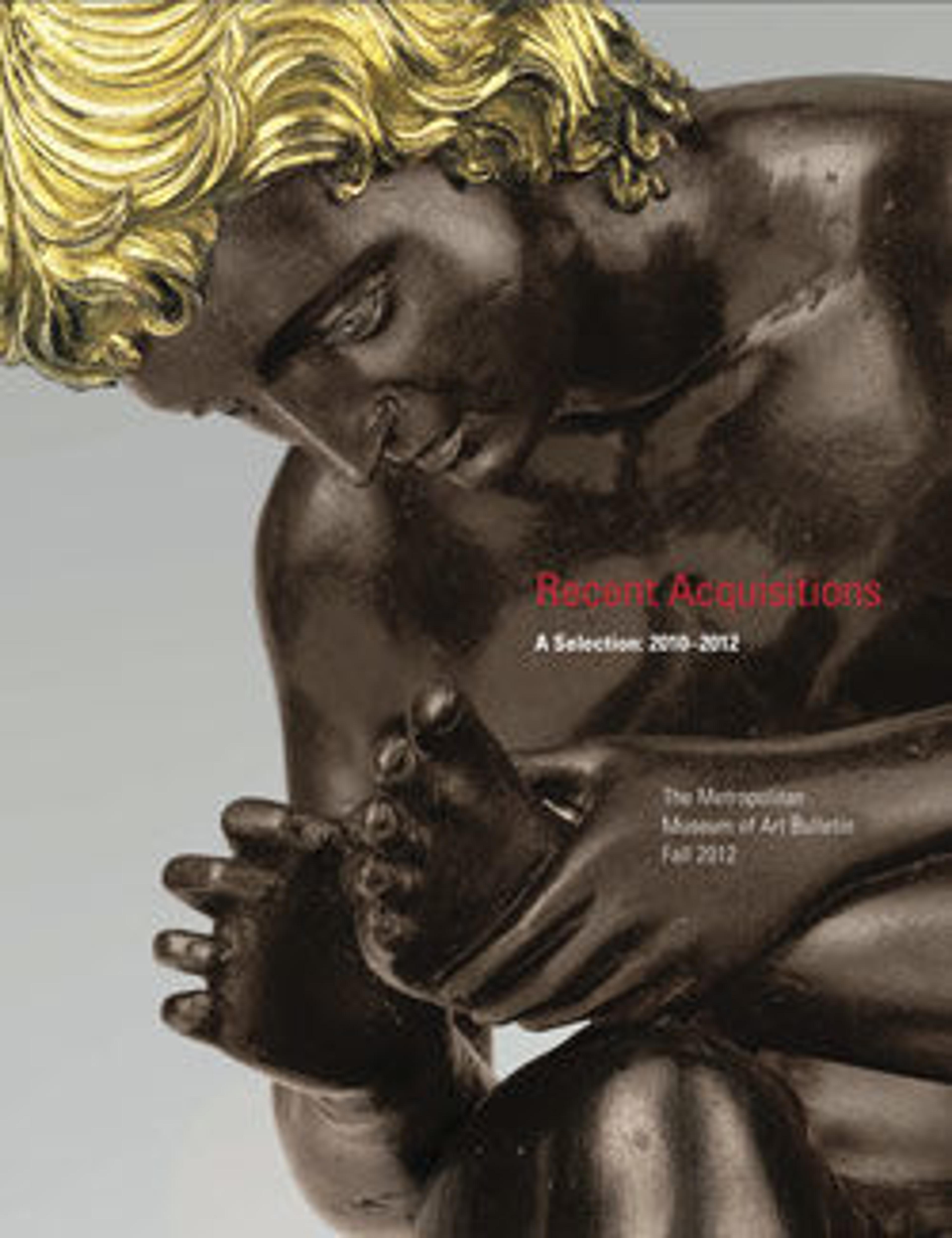Delirious Hem
Ellen Gallagher's debut on the New York art scene in 1995 at the Whitney Biennial and subsequent one-person show at Mary Boone Gallery in 1996 (where Delirious Hem was shown) brought her instant critical attention. Her large "paintings"—actually crafted from multiple sheets of drawn paper pasted in rows to a caveat support—combine the post-modernist interest in race, gender, and identity with the grid aesthetic of Minimalism. Neither wholly pictorial nor abstract, her works can be read on many different levels, and they suggest visual sources as diverse as patchwork quilts, African textiles, and Agnes Martin paintings. Small line drawings of thick lips (an allusion to the negative stereotyping of African Americans in blackface minstrel shows) are embedded throughout this composition. Clustered in small groupings that resemble beaded bracelets and barely visible under the sheets of blue-lined penmanship paper that form the rectangles in the center, these racial signifiers are a disturbing undertow in an otherwise seemingly lyrical image.
Artwork Details
- Title: Delirious Hem
- Artist: Ellen Gallagher (American, born Providence, Rhode Island, 1965)
- Date: 1995
- Medium: Graphite and colored pencil on cut and torn pasted papers mounted on canvas
- Dimensions: 84 in. × 72 1/4 in. (213.4 × 183.5 cm)
- Classification: Paintings
- Credit Line: Gift of Norman Dubrow, 2010
- Object Number: 2010.427.3
- Rights and Reproduction: © Ellen Gallagher
- Curatorial Department: Modern and Contemporary Art
More Artwork
Research Resources
The Met provides unparalleled resources for research and welcomes an international community of students and scholars. The Met's Open Access API is where creators and researchers can connect to the The Met collection. Open Access data and public domain images are available for unrestricted commercial and noncommercial use without permission or fee.
To request images under copyright and other restrictions, please use this Image Request form.
Feedback
We continue to research and examine historical and cultural context for objects in The Met collection. If you have comments or questions about this object record, please contact us using the form below. The Museum looks forward to receiving your comments.
